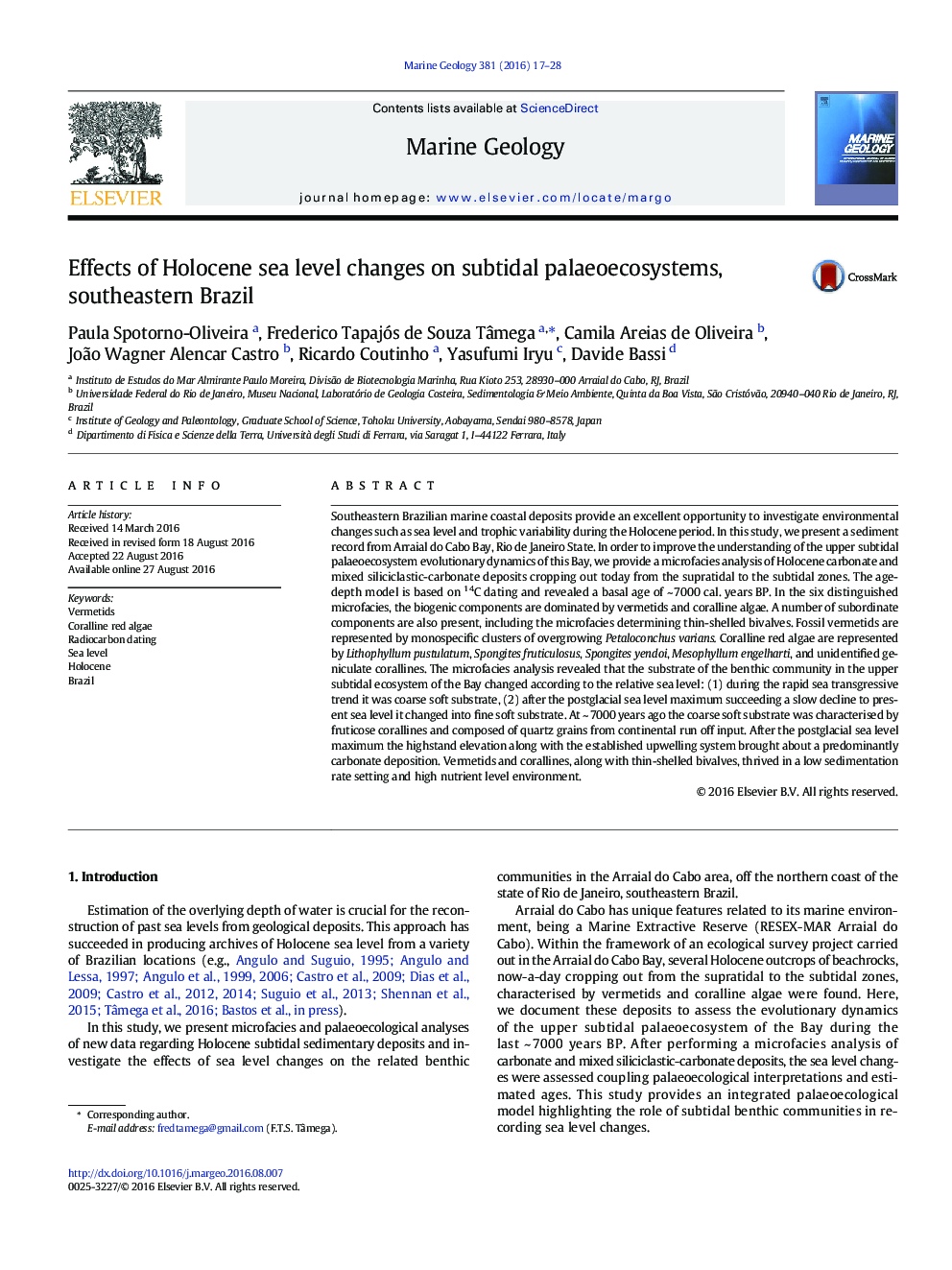| کد مقاله | کد نشریه | سال انتشار | مقاله انگلیسی | نسخه تمام متن |
|---|---|---|---|---|
| 6441256 | 1639071 | 2016 | 12 صفحه PDF | دانلود رایگان |
- Effects of Holocene sea level changes on upper subtidal communities.
- Microfacies analysis tracks changes in Brazilian subtidal benthic communities.
- During the transgression, fruticose corallines thrived on coarse soft substrate.
- Vermetids, corallines and bivalves formed the highstand fine soft substrate.
- Sea level changes and the upwelling system governed upper subtidal community ecology.
Southeastern Brazilian marine coastal deposits provide an excellent opportunity to investigate environmental changes such as sea level and trophic variability during the Holocene period. In this study, we present a sediment record from Arraial do Cabo Bay, Rio de Janeiro State. In order to improve the understanding of the upper subtidal palaeoecosystem evolutionary dynamics of this Bay, we provide a microfacies analysis of Holocene carbonate and mixed siliciclastic-carbonate deposits cropping out today from the supratidal to the subtidal zones. The age-depth model is based on 14C dating and revealed a basal age of ~ 7000 cal. years BP. In the six distinguished microfacies, the biogenic components are dominated by vermetids and coralline algae. A number of subordinate components are also present, including the microfacies determining thin-shelled bivalves. Fossil vermetids are represented by monospecific clusters of overgrowing Petaloconchus varians. Coralline red algae are represented by Lithophyllum pustulatum, Spongites fruticulosus, Spongites yendoi, Mesophyllum engelharti, and unidentified geniculate corallines. The microfacies analysis revealed that the substrate of the benthic community in the upper subtidal ecosystem of the Bay changed according to the relative sea level: (1) during the rapid sea transgressive trend it was coarse soft substrate, (2) after the postglacial sea level maximum succeeding a slow decline to present sea level it changed into fine soft substrate. At ~ 7000 years ago the coarse soft substrate was characterised by fruticose corallines and composed of quartz grains from continental run off input. After the postglacial sea level maximum the highstand elevation along with the established upwelling system brought about a predominantly carbonate deposition. Vermetids and corallines, along with thin-shelled bivalves, thrived in a low sedimentation rate setting and high nutrient level environment.
Graphicalabstract
Journal: Marine Geology - Volume 381, 1 November 2016, Pages 17-28
